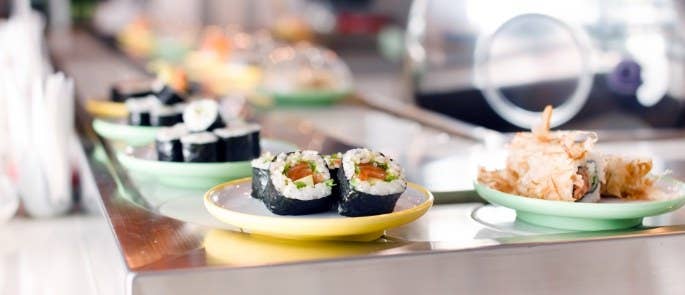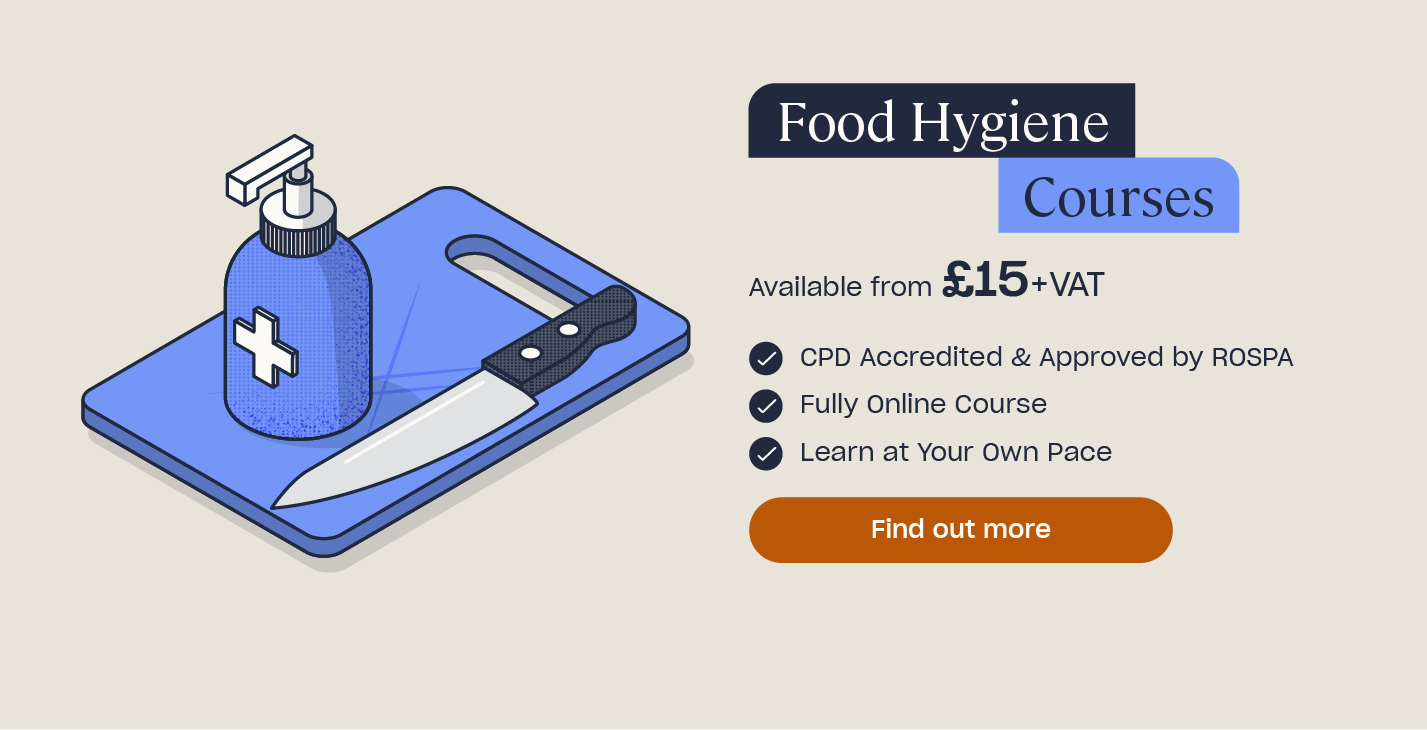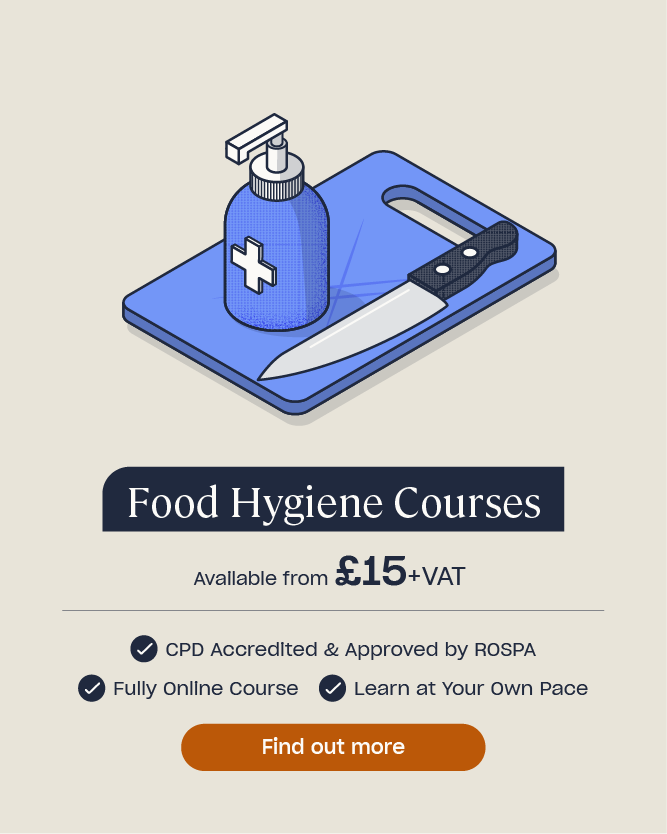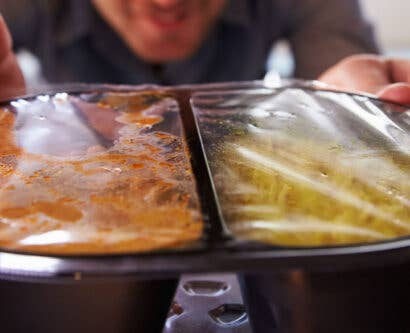Is Sushi Safe to Eat?
Many people are put off by the thought of eating raw fish and other types of sushi. It’s understandable, given how the importance of cooking meat and fish is often hammered into us throughout our lives. However, raw meat and fish are perfectly safe to eat if they are prepared correctly and handled with care.
After all, people have eaten sushi for centuries, and millions around the globe still eat it daily without getting sick. If anything, people who eat sushi can gain numerous health benefits – provided they eat it in moderation and at trustworthy places.

If you’re still not convinced, this article is here to clarify the risks that sushi can pose and explains how food businesses that serve sushi minimise them. It could be just what you need to push past that first barrier and give sushi a try.
Sushi Safety Concerns
A common misconception many people have is that all sushi contains raw fish or meat. This is not the case. Raw fish or meat is just one of many types of sushi. So, if the thought of eating raw fish or meat is too much, you can still enjoy numerous other types of sushi.
It’s also important to recognise that dishes with raw fish or meat carry the same level as any high-risk food, and they can be made safe to eat through proper sourcing, storing, and preparation. To make raw fish sushi grade, it needs to go through a different process than we’re used to for most high-risk foods, which is just as simple and effective for making it safe. In fact, it is required by food safety law.
Pathogens and Contaminants
Safe sourcing, storing, and preparation is crucial for preventing Pathogens and Contaminants.
Pathogens
Just like various meats, fish can carry harmful pathogens. The most common type is anisakis – a parasitic disease that may make people sick if they consume it. Fish can be inspected to remove visible anisakis parasites, but some may remain undetected. Therefore, they require thorough cooking or deep freezing to kill the remainder.
There is also a risk of tapeworms in certain raw fish, but they only affect freshwater fish. Most types of fish used for sushi are saltwater so do not have this risk, such as salmon, tuna, shrimp, and mackerel. However, a common type of sushi called unagi uses freshwater eel, so the eel must be cooked.

The Food Standards Agency (FSA) sets out the processes that food businesses must follow if they plan to serve raw fish. Businesses must source sushi grade fish from suitable farms, store them under specific deep-freezing conditions, and prepare them hygienically.
Therefore, if you dine somewhere that has a good food hygiene rating, they are most likely following these standards and their sushi is perfectly safe to eat.
Contaminants
Another risk many people worry about is contaminants in raw meat and fish, such as mercury.
Mercury naturally occurs in seawater and the level in fish varies between types. It can also vary depending on where it was fished from. The level of mercury in most fish is not high enough to cause significant harm, and the health benefits of consuming the fish outweigh the risks. For example, salmon, cod, and shrimp usually contain low levels that cannot cause harm with moderate consumption.
However, the mercury level in tuna, particularly the variety used for sushi tuna, is often high. This is because they usually live longer and grow larger than other fish, so accumulate mercury over time. Therefore, people should minimise their consumption of sushi tuna to once or twice a week.

How Big is the Risk?
As you can see, the risks that sushi poses are minimal, provided food businesses follow the right procedures and you consume it sensibly. Some groups of people should avoid consuming sushi just to be safe – after all, contamination can occur in any food without proper hygiene practices. The consequences would simply be worse for them.
Follow these 3 tips to avoid sushi risks:
- Avoid eating raw fish and meat if you’re a vulnerable individual. Examples of vulnerable people include pregnant women, the elderly, children, and anyone with a weakened immune system.
- Always check the food hygiene rating of restaurants before you go. You can check the rating for free on the Food Standards Agency Aim to dine at places with a hygiene rating of 5 if you plan to eat raw fish or meat.
- Minimise your consumption. Many sushi restaurants serve all sorts of delicious dishes, both raw and cooked. If you’re still worried, you can eat a mix of meat and vegetable sushi, just the cooked meat and fish, or just the vegetarian or vegan options.
Hopefully, this article has dispelled any myths and worries you had about eating sushi. As long as you pick the right establishment, you’ll not only minimise risks, but also enjoy high quality, delicious, and even healthy food.
What to Read Next:
- Shellfish Safety: How to Source, Store and Cook Them Safely
- Should I Store Open Food Cans In The Fridge?
- Serving Medium Cooked Burgers – Safety Guidance











